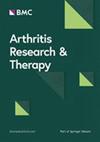UBE2D1作为系统性幼年特发性关节炎的关键生物标志物:诊断和疾病活动性评估的新视角
IF 4.6
2区 医学
Q1 Medicine
引用次数: 0
摘要
早期诊断对于减少系统性幼年特发性关节炎(sJIA)患者的残疾和改善长期预后至关重要,但这仍然是一个重大挑战。本研究旨在寻找对sJIA具有较好诊断效果的非侵入性生物标志物。为了预测sJIA的早期潜在生物标志物候选物和致病机制,我们对来自中国sJIA队列的pbmc进行了scRNA-seq和Bulk RNA-seq。这些发现通过体外实验和细胞测序得到了验证。我们还建立了UBE2D1与其他全身性疾病的关系,以确定sJIA可能的并发症。使用scRNA-seq和Bulk RNA-seq,我们发现UBE2D1表达与疾病活动水平密切相关,特别是在sJIA患者的经典单核细胞中。功能富集表明UBE2D1可以通过激活nlr来促进疾病进展。随访数据显示治疗前后UBE2D1表达和单核细胞数量显著降低。伪时间分析显示,在单核细胞发育过程中,UBE2D1的表达最初是高的。Western blot结果显示,UBE2D1和NLRs标记蛋白水平升高,引入UBE2N和NF-κB抑制剂后,UBE2D1和NLRs标记蛋白水平降低。Co-IP提示UBE2D1通过与IKB-α相互作用介导NLRs通路的激活。UBE2D1并发症图谱表明,UBE2D1可能促进17种不同系统的各种疾病的发展,包括自身免疫性疾病、消化系统和眼部疾病。我们的研究结果为sJIA的生物学机制提供了见解,表明UBE2D1在单核细胞中高表达,可能代表早期诊断的候选生物标志物和临床治疗策略的潜在方法,有待进一步验证。本文章由计算机程序翻译,如有差异,请以英文原文为准。
UBE2D1 as a key biomarker in systemic juvenile idiopathic arthritis: a new perspective on diagnosis and disease activity assessment
Early diagnosis is crucial for reducing disability and improving long-term prognosis in patients with systemic Juvenile Idiopathic Arthritis (sJIA), but it remains a significant challenge. This study aims to identify non-invasive biomarkers with superior diagnostic efficacy for sJIA. To predict early potential biomarker candidates and pathogenic mechanisms for sJIA, we performed scRNA-seq and Bulk RNA-seq on PBMCs from the Chinese sJIA cohort. The findings were validated through in vitro experiments and cell sequencing. We also established the relationship between UBE2D1 and other systemic diseases to determine possible complications of sJIA. Using scRNA-seq and Bulk RNA-seq, we discovered that UBE2D1 expression is closely related to disease activity levels, specifically in classical monocytes from sJIA patients. Functional enrichment suggested that UBE2D1 could enhance disease progression by activating NLRs. Follow-up data indicated a significant reduction in UBE2D1 expression and monocyte numbers before and after treatment. Pseudotime analysis revealed that UBE2D1 expression is initially high during monocyte development. Western blot results showed increased levels of UBE2D1 and NLRs marker proteins, which decreased upon introducing UBE2N and NF-κB inhibitors. Co-IP suggested that UBE2D1 mediates the activation of the NLRs pathway by interacting with IKB-α. The UBE2D1 complication map indicates that UBE2D1 might contribute to the development of various diseases across 17 different systems, including autoimmune diseases, the digestive system, and ocular conditions. Our findings provide insights into the biological mechanisms of sJIA, indicating that UBE2D1, which is highly expressed in monocytes, may represent a candidate biomarker for early diagnosis and a potential method for clinical treatment strategies, pending further validation.
求助全文
通过发布文献求助,成功后即可免费获取论文全文。
去求助
来源期刊

Arthritis Research & Therapy
RHEUMATOLOGY-
CiteScore
8.60
自引率
2.00%
发文量
261
审稿时长
14 weeks
期刊介绍:
Established in 1999, Arthritis Research and Therapy is an international, open access, peer-reviewed journal, publishing original articles in the area of musculoskeletal research and therapy as well as, reviews, commentaries and reports. A major focus of the journal is on the immunologic processes leading to inflammation, damage and repair as they relate to autoimmune rheumatic and musculoskeletal conditions, and which inform the translation of this knowledge into advances in clinical care. Original basic, translational and clinical research is considered for publication along with results of early and late phase therapeutic trials, especially as they pertain to the underpinning science that informs clinical observations in interventional studies.
 求助内容:
求助内容: 应助结果提醒方式:
应助结果提醒方式:


